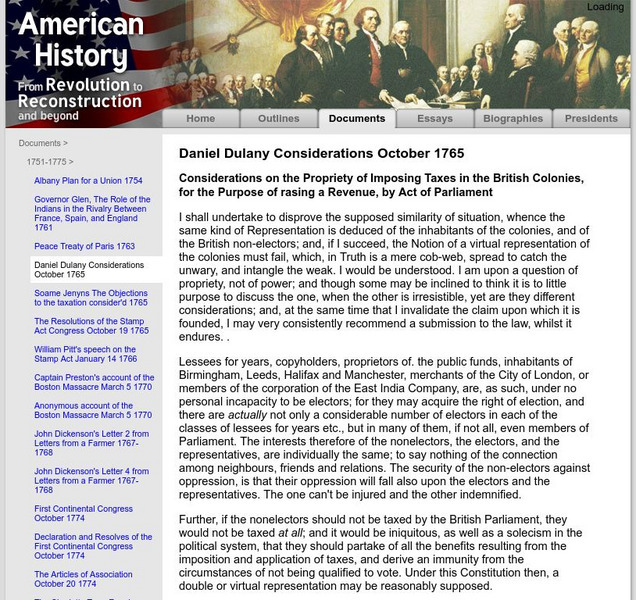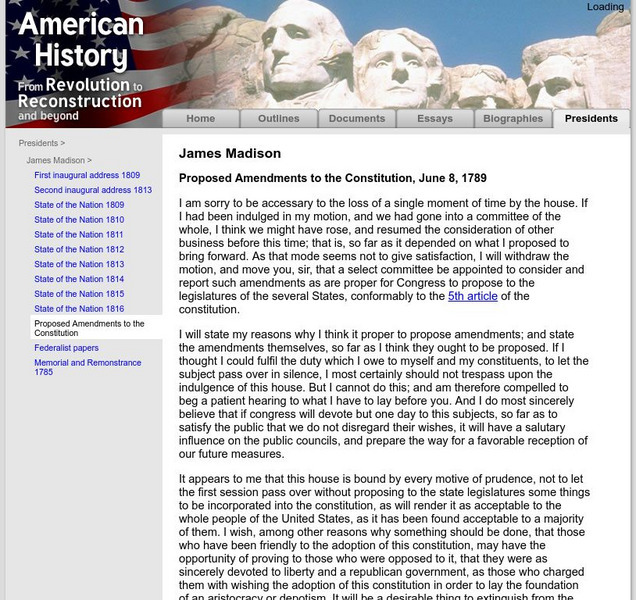Curated OER
Leadership in Jamestown
Students formulate criteria for leadership based on evaluation of Jamestown's leaders, and identify origins, compositions, and goals of the Virginia Company.
Curated OER
Colony Brochure
Middle schoolers, after studying the 13 colonies, create a brochure advertising one of the colonies. The purpose of the brochure, they were told, would be to urge people in Europe to come to America and settle in their particular colony.
Curated OER
Parent's Day
Students prepare for a parent's day. For this holiday lesson, students write invitations to their parents inviting them to attend a Thanksgiving meal. They plan out what they will be serving and setting up for a colonial flag...
Curated OER
Settlements
Fifth graders discover colonial life. In this settlements lesson, 5th graders read a case study and research colonial life. Students present their findings and perspective from the view of Samuel Daggett.
Curated OER
American Revolution Puzzle
In this US History worksheet, students identify and locate vocabulary terms related to the American Revolution. There are 30 words located in the word search.
Curated OER
From the Four Corners 1
Students view a film looking at government propaganda during WWII. They look at the portrayal of Commonwealth tropps in "From the Four Corners." Students are asked to evaluate the utility of the film as evidence of why Commonwealth...
Curated OER
Revolutionary Idea
Pupils take a field trip to watch a reenactment of the Revolutionary War. In groups, they participate in the same daily chores as the soldiers and examine the contributions of the colonies. To end the lesson, they eat a typical colonial...
Curated OER
VS.5a
Fifth graders explore, examine and identify the reasons why the colonies went to war with England as expressed in the Declaration of Independence. They discover the conflicts that developed between the colonies and England over how the...
Curated OER
Affects of Geography on Colonial Cultures
Sixth graders examine the effects of geography on the development of culture. They discuss how geography can affect the lifestyles and development of a society's culture. Students examine the geography and climate of New England and the...
Curated OER
Bacteria Buddies
Tenth graders grow two different bacteria cultures. They count the colonies, and then use graphing calculators to predict the number of colonies that are going to appear. Students answer questions from their worksheet after completing...
Curated OER
Militia of the American Revolutionary War
Pupils explore the role of the colonial militia n the American Revolutionary War. Using traditional and internet resources, students, complete a research worksheet designed to provide information about the militia. Worksheet is provided.
Curated OER
Colonial Settlement and Environmental Problems
Students work together to develop a chart showing the relationship between the settlement of the United States and environmental problems. Using this information, they identify the human activities responsible for damaging the...
Curated OER
The Colonies: An Adertisement
Students explore the early colonies of American settlements. After researching important characteristics such as land, politics, economics, and educational opportunities, students create their own advertisement for one of the colonies.
Curated OER
Colonial Quilt Quest
Learners identify key events and people from Colonial America.
Students identify key factors of daily life in Colonial America.
Learners gather and use information for research purposes.
Students create candles in groups following the...
Curated OER
Magnolia
Students explore the first English colonies in America. They watch a video on the era of colonization. Students answer questions about the colonies. They visit a specified website to gather information on American settlers and the...
Curated OER
Virginia Studies
Students describe life in the Virginia colony. They explain how geography influenced the relocation of Virginia's capital from Jamestown to Williamsburg, to Richmond. Students compare/contrast life in Jamestown and Williamsburg.
Curated OER
New Ship For the Old World
Students explore the age of sailing in the colonies through role-playing. In groups, they play the role of a business owner, shipbuilder and geographer to complete specific tasks. They participate in an old World trade show to...
Curated OER
Egg Carton Coral
Students use egg cartons to construct models of coral colonies showing
many aspects of the coral's natural history - including the structure of
coral polyps and the coral colony's colonial life style.
Curated OER
Colonial Geography: To and From Canada
Students identify the major geographic features of colonial New England. They explain the essential parts to a map and interpret journals to plot a journey. They discover the connection between geography and life.
Curated OER
Colonial America
Learners read the novel, The Witch of Blackbird Pond. In groups, they conduct research using the Internet, encyclopedias, and books to gather information on an assigned colony. The projects are presented to the rest of the class.
Curated OER
Geography of the English Settlements
Third graders locate several important American colonial cities on a map and research how their proximity to water and nearby arable land affected the rate and success of settlement.
Curated OER
Indians and African Americans 1780-1820
Students explain that opportunities for African Americans remained severely limited by slavery until 1783. They examine the 1783 Massachusetts abolishment of slavery and its impact.
University of Groningen
American History: Documents: Daniel Dulany on Taxes
Contains original text of Daniel Dulany's arguments against the Parliament's right to tax the colonies for revenue.
University of Groningen
American History: Presidents: James Madison: Proposed Amendments to Constitution
Text of James Madison's "Proposed Amendments to the Constitution," June 8, 1789. Madison states his reasons for the amendments in view of the anti-federalist feelings in many of the colonies. The proposal explains in Madison's own words...























